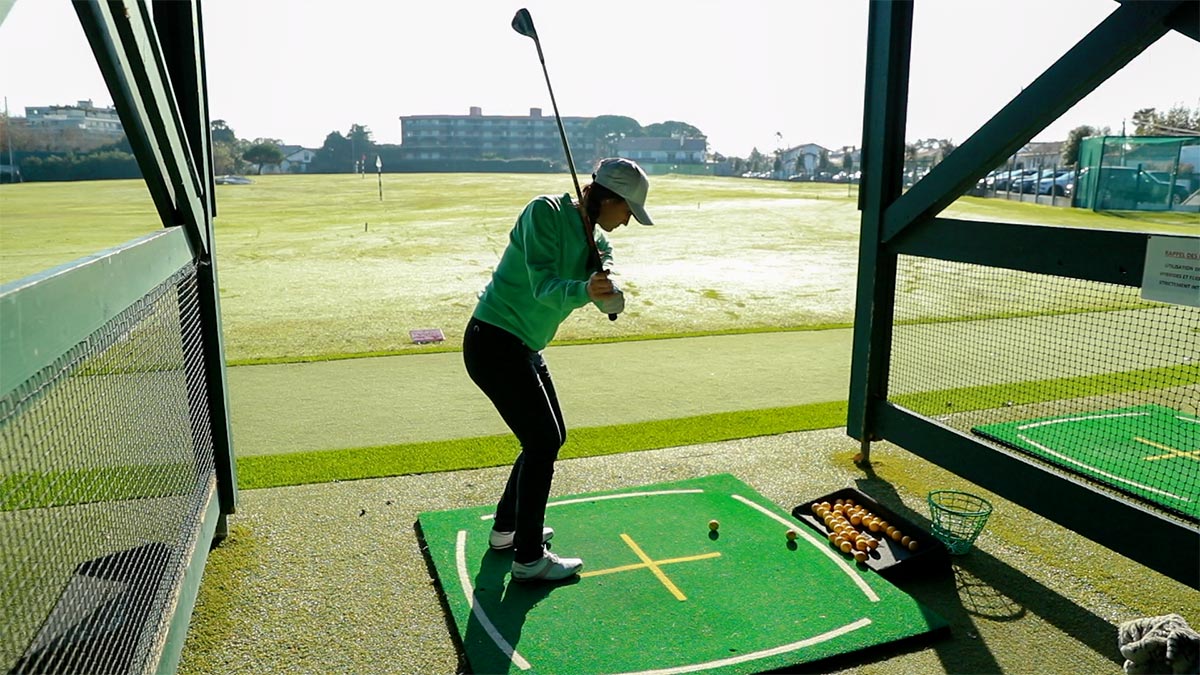
To achieve a perfect golf swing you must align your body and hands during the swing. This article will explain the importance of grip pressure, keeping clubface straight to the plane of your swing, and flexing you shaft. You will also learn the importance of proper stance, an essential part of golf swing technique. In the end, you will be able hitting the ball in a manner that will lead to a high score at the course.
How to swing a golf club
There are many ways to swing a golf club and each one has its own goals. There is no one right way to swing a golf ball. It depends on many factors. These factors include swing plane, lag, angle of attack, and body position. Mastering the fundamentals is the first step to perfecting your swing. This article explores some of the most common golf swing mistakes and how you can avoid them.
Apply grip pressure
Surprised to find out that top golfers often use very little grip pressure in order to control their golf swing. It's not something that's just for beginners. It's crucial for great play. Here are some tips to help you control your grip pressure when playing golf. Start by standing in front of the ball. Next, gently swing the club until it reaches your knees. Feel the weight of the club in the palm of your hand. If you grip the club too tightly, it will feel unsecure.

Remaining square with the plane of the swing
For proper alignment, it is important to keep the face of your golf club parallel to the ground when you are in the backswing. The downswing will be easier if the face of your club is parallel to ground. The lead arm should not be pulled too far behind the body. This can cause problems in the future. This can be fixed by placing your lead arm slightly behind you, so that the club face is facing down.
Shaft flex
There are many factors that affect shaft flexibility when golf swing clubs are used. Tour pros and low-handicappers often opt for stiffer shafts to ensure the clubhead is in the best position during their swings. Properly fitting a golf club shaft is crucial for maximum distance, accuracy, and trajectory. A stiff shaft will allow for better control and distance.
Position of club in the backswing
The first step to achieving the right stance for the golf club is to watch the backswing. The clubhead should point slightly left towards the top. It is on plane if the club head is pointed in the direction of the golfer's hand at the top end of the backswing. If it does, it's off plane. The golfer should stop his swing and move across the line.
Timing of downswing
To have a successful golf swing, timing the downswing is crucial. Timing is essential to the sequence. It facilitates the transfer and energy of energy from the inner to outer segments. As energy is transferred from the large inner section to the smaller outside segment, it gains speed. It is important to time the downswing.

Practicing in front of a mirror or window
It is a great way to improve your game by practicing golf swing club placement in front a mirror or a window. You must stand straight while you perform the drill. The mirror should be behind you. Now, move the club back to ensure that the sole points towards the mirror. You can adjust the position of the club by checking its position. Once you are happy with the positioning, move back to practice your swing.
FAQ
What's the best time to golf?
The ideal time to play golf is between May and September. There is rarely any rain during this period and the temperatures are usually moderate.
Winter months can be very cold. Snowfall can make it difficult for fairways to be walked.
In spring and autumn, the grass grows too high, making it hard to see the flagstick.
How can a player score points while playing golf?
Points are awarded based on how well a player performs in a competition. You have many options for scoring points in golf. For example, a player could win a tournament outright by scoring more than anyone else. In another scenario, a player might place second in a tournament. This would allow them to receive half the prize cash that was won by their winner. For placing in the third through 10th places, points are also given. These extra points are known by the "strokes."
Apart from these official competitions there are many other events that award points for the best performers. Sometimes, bonus points may be awarded to players who have performed well at an event in the past.
Where can I find a golf course?
Most major cities have their very own golf courses. These courses offer quiet practice for your swing.
If you prefer a more casual atmosphere, one of the many country's golf resorts might be a good option.
How can I learn to play golf?
Yes. There are several schools where you can enroll to learn how to play golf. You will need new equipment like a set for golf.
How can I improve my golf game?
There are many things you can do to improve your playing ability. You can join a group that plays golf. A club can help you meet other golfers, and teach you new techniques.
You can also purchase equipment like balls and clubs. These items will assist you in improving your game.
You could also read books about golf. Reading about the game will give you a deeper understanding of its rules and regulations.
How is golf played?
Golf is played over 18 holes using the Rules of Golf.
The first stroke starts from behind a designated spot on the teeing. Players take turns hitting the balls into holes placed at various distances throughout the course. Each hole has a set number of strokes based on its distance from a teeing spot.
There are three main types used in golf:
-
A drive shot is where the players use clubs in order to hit it as far as possible. This type of shot is often considered the most important.
-
In an approach shot, players strike the ball within a certain range of the hole.
-
A putt in which players attempt to sink the ball down into the cup through rolling it along with the ground.
Each hole must be completed by the player who has put all his/her putts in. For each putt not made, the player loses one stroke.
It is possible for players to choose to play alongside a caddy or partner. This person will be responsible for carrying their club throughout a round. While the caddie is not usually involved in the decision making process, they can provide advice on strategy and etiquette.
Statistics
- Professional golfers typically make between 60% and 70% of greens in regulation. (en.wikipedia.org)
- They do this by means of assessing and rating courses according to the average good score of a "bogey golfer," a player with a handicap of around 20. (en.wikipedia.org)
- He shanked the first attempt, but it is estimated his second went more than 200 yards (180 m).[52]Golf courses worldwide. Below are the top 20 countries with the most golf courses as of 2019.[53]CountryNumber of (en.wikipedia.org)
- Buying a set of Titleist or Taylor-Made irons for nearly $1,000 is simply not necessary and likely a waste of money. (golficity.com)
External Links
How To
How To Hit A Perfect Bunker Shot
A bunker shot refers to a type of shot in golf where your ball is directed at a spot on the green (the hole), and you aim for that spot so it doesn't bounce off the surface. This is achieved by taking advantage the green's slope. The idea is to get the ball into the most direct path possible towards the hole.
Playing golf requires you to determine the best line for reaching your target. You have to consider several factors such as how much distance away you are from the target, what kind of terrain you're hitting through, whether the ball needs to bounce off the ground or fly straight, and even weather conditions.
You must understand the physics of bunker shots in order to make them perfect. First, decide if you're going uphill and downhill. If you're looking uphill, you will need to use a drawing tool. If you're facing downhill, you'll need to swing with a fade. Next, determine the speed at which your body can move to stop the ball hitting the green. This can be done using the angle between you and the ball. Finally, you'll need to know the size of the bunker you're aiming at.
These are the basics of swinging. The ball should travel as far as possible past the clubhead, while you must swing slowly enough to keep it from hitting the green. Once you have established the correct speed and trajectory for your shot, you can then begin to plan your approach. Slowly approach and touch the ball so that you can see the landing spot. Then, take one last look at the ball before releasing it. If everything goes according to plan, you should be able to hit a perfect bunker shot.